Navigating Bankruptcy in Investment Treaty Arbitration: The Emerging Intersection with Insolvency Law
September 22, 2025
In recent years, investment treaty arbitrations involving bankruptcy issues have been on the rise, reflecting the growing intersection between insolvency and international investment law. This convergence introduces both procedural and substantive complexities, as investment arbitrations are governed by international law, while bankruptcy matters are subject to domestic legal frameworks.
The divergence between these regimes can pose challenges – for example, regarding the admissibility of claims and the scope of substantive treaty protections available to investors. This post addresses key issues raised in recent ICSID cases involving bankrupt entities, highlighting the evolving role of bankruptcy within the context of investment arbitration.
Background: Insolvency and Bankruptcy
Insolvency and bankruptcy are related concepts, but they refer to different stages of financial distress. Insolvency is a financial state where a business is unable to pay its debts as they come due. Bankruptcy occurs when a business is declared insolvent by a court and entails formal legal proceedings to resolve its debts. Bankruptcy includes an official liquidator who takes control of the entity, reports to creditors, liquidates assets, and pays creditors in accordance with priority rankings. As such, a liquidator may pursue interests that diverge from those of the bankrupt entity's shareholders.
While insolvency is relevant in investment arbitration as a factual circumstance (e.g., for assessing causation and quantum), pending bankruptcy proceedings raise specific legal questions on procedure, merits, and enforcement.
Bankruptcy Issues in Investment Treaty Arbitration
The role of bankruptcy in investment arbitration can be multifaceted. The following are examples of issues that have arisen in ICSID arbitrations.
Legal Representation
First, as demonstrated in BRIF TRES and BRIF-TC v. Serbia, bankruptcy-related issues in investment arbitrations have raised questions regarding legal representation.
The BRIF arbitration involved claimants, who sought to establish their qualification as foreign investors for the purpose of jurisdiction under Article 25(2)(b) of the ICSID Convention due to foreign control. BRIF-TC became subject to bankruptcy proceedings. Serbia argued that the liquidator had become BRIF-TC's rightful legal representative in the arbitration, and the liquidator requested a suspension of the arbitration. The tribunal reportedly acknowledged that, in principle, the issue of legal representation is governed by Serbian insolvency law. However, it drew an analogy to the concept of foreign control under Article 25(2)(b) of the ICSID Convention, which is assessed at the time of the parties' consent to arbitration (i.e., when the request for arbitration is submitted). The tribunal concluded that the subsequent bankruptcy did not affect legal representation, and BRIF-TC's counsel could continue to act.
Liquidator Independence From the Respondent State
A related issue in arbitral practice concerns the question of a bankruptcy administrator's independence from the respondent state in investment arbitration.
Similar to the BRIF case, AS PNB Banka and others v. Latvia involved bankruptcy proceedings in the respondent state. AS PNB Banka's claims were likely raised under Article 25(2)(b) of the ICSID Convention, allowing the Latvian bank to argue that it should be treated as a UK national due to foreign control. Following bankruptcy, counsel informed the tribunal that it no longer represented AS PNB Banka but continued to represent the shareholder claimants in the arbitration. Supported by Latvia, the liquidator argued that he should act as the bank's representative and appoint counsel, as the bank was no longer represented by its corporate organs.
In its procedural order, the tribunal applied a two-step test. First, it asked whether the liquidator had the authority to represent the bank, considering Latvian insolvency law as determinative since international law does not address this issue. Second, the tribunal examined whether there was any conflict of interest or undue dependency between the liquidator and Latvia, to ensure that Latvia would not effectively gain control over its adversary.
Since the liquidator confirmed that he would remain silent on the shareholder claimants' claim for reflective loss under the applicable BIT, the tribunal decided that no conflict of interest or bias existed regarding AS PNB Banka's claim, for which the liquidator was recognized as the bank's representative. However, for any future submissions by the bank on the shareholders' claims, the bank's directors (and their counsel) were accepted as representatives.
The tribunal described this divergence as being due to the "peculiar circumstances of the case", namely, the simultaneous raising of shareholder claims for reflective loss. It noted the liquidator had adopted the shareholder claimants' position on the intra-EU objection against Latvia's interests. The tribunal also referred to domestic law provisions on liquidator independence. It clarified that it expects to be informed if new facts arise and reserves the right to reopen the issue.
Legal Standing and Authorization
In a similar vein, parties in investment arbitrations have addressed issues of legal standing and authorization when a claimant entity is bankrupt.
In Lotus Holding, the tribunal accepted Turkmenistan's argument that the claims were manifestly without legal merit under ICSID Arbitration Rule 41. The claims were not shareholder claims for reflective loss but contract claims belonging to another Turkish company, Lotus Enerji, which was not a party to the proceedings.
Turkmenistan further explained that Lotus Enerji had been declared bankrupt and that:
"[c]laims for money owed to a bankrupt company belong to its bankruptcy estate and can only be pursued by the proper party, with the authorization of the Turkish bankruptcy authorities […] and are payable only to the bankruptcy estate."
It contrasted this to Muhammet Çap & Sehil, where bankrupt Sehil had been authorized to pursue its arbitration claims.
The Lotus Holding tribunal noted in obiter that:
"[i]f monies are due to Lotus Enerji, whether under the contracts or otherwise (for example, under the BIT […]), those monies […] would fall for distribution under the control of the Turkish bankruptcy process. Lotus Holding is a shareholder in Lotus Enerji, but it has no right to receive any […] assets outside of the bankruptcy process."
The tribunal added that it "would be mindful of the need to consider the proper relationship between the […] arbitration proceedings on the one hand, and the bankruptcy proceedings on the other."
Arguments of Abuse of Process
In addition to the procedural issues discussed above, investment arbitration jurisprudence reveals that claims of abuse of process have been raised in relation to bankruptcy-related issues in investment disputes.
In Lotus Holding, Turkmenistan also argued that, since the claimant had no authorization from the bankruptcy authorities to pursue Lotus Enerji's claims in the arbitration, the claimant was "pursuing a strategy to avoid the scrutiny of the Turkish Bankruptcy Directorate […] and […] Lotus Enerji's creditors, by ensuring that proceeds of claims […] are not paid to the bankruptcy estate, but to" the claimant. Turkmenistan submitted that any "attempt to bypass the creditors of an entity in bankruptcy would be illegal, invalid, and even possibly criminal, under Turkish law", concluding that "there is an abuse of process in this arbitration."
In WM Mining LLC v. Mongolia, the tribunal dismissed bankruptcy-related claims as an abuse of process. The US claimant invested indirectly through the Swiss company WM Mining AG (WMM AG), which was undergoing bankruptcy under a Swiss liquidator's control, initiated before the arbitration. Assessing the bankruptcy facts, the tribunal held that "the arbitration was the culmination of the Claimant's attempt to collect funds and gain undue advantages over other creditors by taking precedence over the Liquidator in a treaty claim against the Respondent", and that "this goes against the purpose for which the right to arbitrate was established". It found that the claimant engaged in illegal acts involving the disposal of WMM AG's assets in Mongolia. It held that "only the Liquidator was authorized to represent WMM AG and to dispose of the Shares and the Licenses, and that the creditors of WMM AG had privilege over both the Claimant and [its shareholder]" in the bankruptcy rankings.
Third-Party Funding (TPF) and Security for Costs
Investment arbitrations involving bankruptcy scenarios often rely on TPF. As a result, tribunals in such cases frequently discuss issues such as the disclosure of TPF agreements and applications for security for costs.
In Muhammet Çap & Sehil, the tribunal ordered disclosure of the funding terms. This followed Turkmenistan's indication that it would seek security for costs. The tribunal noted that if the claims failed, the bankrupt claimants would "be unable to meet" an adverse cost order and that the funder would "have disappeared as it is not a party to this arbitration".
In Dirk Herzig v. Turkmenistan, the tribunal considered that the TPF agreement's exclusion of the funder's liability for cost orders, coupled with the claimant's bankruptcy, were circumstances that might require security for costs. However, it remained mindful of access to arbitration and left open the possibility that the claimant could later show it faced insurmountable obstacles in obtaining security. Reportedly, a security for costs order was granted but later rescinded due to concerns over access to justice. This followed the claimant's attempts to provide security through an escrow account, a bank guarantee, and after-the-event insurance.
Investment Treaty Breaches and Attribution
Furthermore, bankruptcy scenarios can give rise to a range of substantive law issues in investment treaty arbitrations. Alleged treaty breaches may stem from measures that cause insolvency, force a company into bankruptcy, involve procedural misconduct (e.g., delays, irregularities, or unfairness), or interfere with ongoing bankruptcy proceedings. These may include claims of indirect expropriation based on substantial deprivation of investment value or control. In the context of bankruptcy, fair and equitable treatment clauses protect against arbitrariness, denial of justice, and lack of due process.
Investment treaty breaches require assessments of state attribution. The Plama tribunal rejected attribution of the challenged measure, citing the limited control Bulgarian courts had over bankruptcy trustees. By contrast, in Dan Cake v. Hungary, the tribunal found that the forced sale of assets "rests on a power specifically conferred by the law to the liquidator", and thus carries "an element of public authority".
Damages and Enforcement of Awards
Finally, asset liquidation follows a legal priority ranking, with creditors taking precedence over shareholders. By asserting shareholder claims for reflective loss, investors may seek compensation for harm arising from the bankruptcy of a local investment vehicle. However, any compensation awarded to the local company, rather than the shareholders, would be distributed to the creditors. Accordingly, the tribunal in Alicia Grace v. Mexico recognized the risk of conflicting outcomes and double recovery, observing that "issuing a decision on the merits may be conducive to an incompatible and/or contradictory outcome with regards to the ongoing insolvency proceedings."
Conclusion
The growing intersection between insolvency and investment arbitration highlights the complex relationship between international investment law and domestic bankruptcy regimes. As demonstrated throughout this post and its case discussions, this interplay gives rise to a range of legal challenges. Yet, the increasing number of cases in this area reflects the adaptability of the investment arbitration system in addressing new and evolving issues. As the field develops, it is essential for arbitration practitioners to navigate these intersections carefully, ensuring that both procedural and substantive aspects of investment disputes are effectively managed within the bankruptcy context.
You may also like
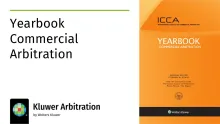




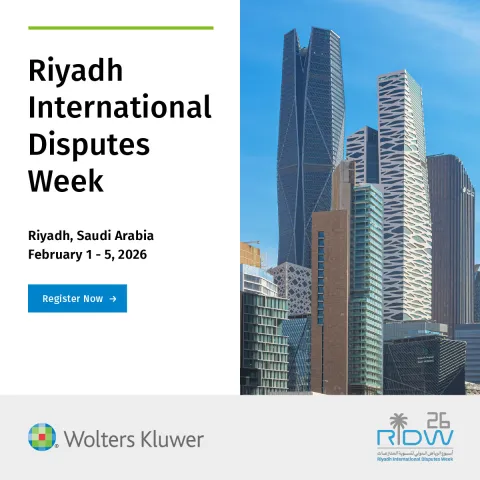
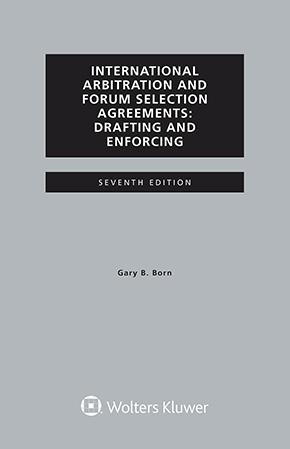
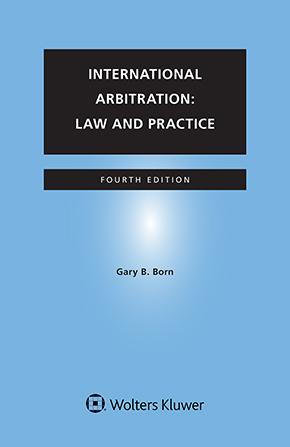

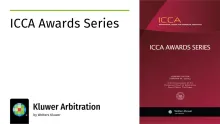

Manuel Penades
You might find it useful to consult the IBA Report on Insolvency and Investment Arbitration. The Report, published in 2024, provides the first comprehensive treatment of the intersection between insolvency and investment arbitration. While some of the questions raised by this intersection are also relevant to commercial arbitration and have been addressed in the IBA Toolkit on Insolvency and Arbitration, this Report covers in detail the various issues that arise specifically in the context of investment arbitration. This includes issues of: 1. Jurisdiction 2. Shareholder standing for reflective loss 3. Attribution of conduct to the State 4. Merits issues (expropriation, fair and equitable treatment, etc.) 5. Damages (existence of loss and causation), valuation, and interest 6. Procedure (including third-party funding, security for costs, and interaction between arbitration and insolvency proceedings) This report was edited by Hamid Abdulkareem and Simon Batifort (2022-2023 Co-Chairs of the Working Group) and Dr Manuel Penades (Academic Chair). The Report includes 7 chapters authored by leading international arbitration practitioners. This Report and the IBA Toolkit on Insolvency and Arbitration are available for download in the IBA website.
Mohamed Dikna
Excellent piece—thank you for sharing! I believe recent treaty reform initiatives, including those led by UNCITRAL and the OECD, have sought to restrict standing to shareholders with direct and substantial ownership or control, to exclude claims for reflective losses, and to prevent actions that circumvent insolvency or corporate governance mechanisms.
Mohamed Dikna
Just to confirm my understanding: are you suggesting that even under BITs that expressly extend protection to indirect investors or investments, shareholders or owners would still lack standing in investment arbitration to claim for losses arising from measures taken by the host State against their company if that company is undergoing insolvency or bankruptcy proceedings—and that, in such circumstances, only the liquidator or receiver would have standing to bring the claim?